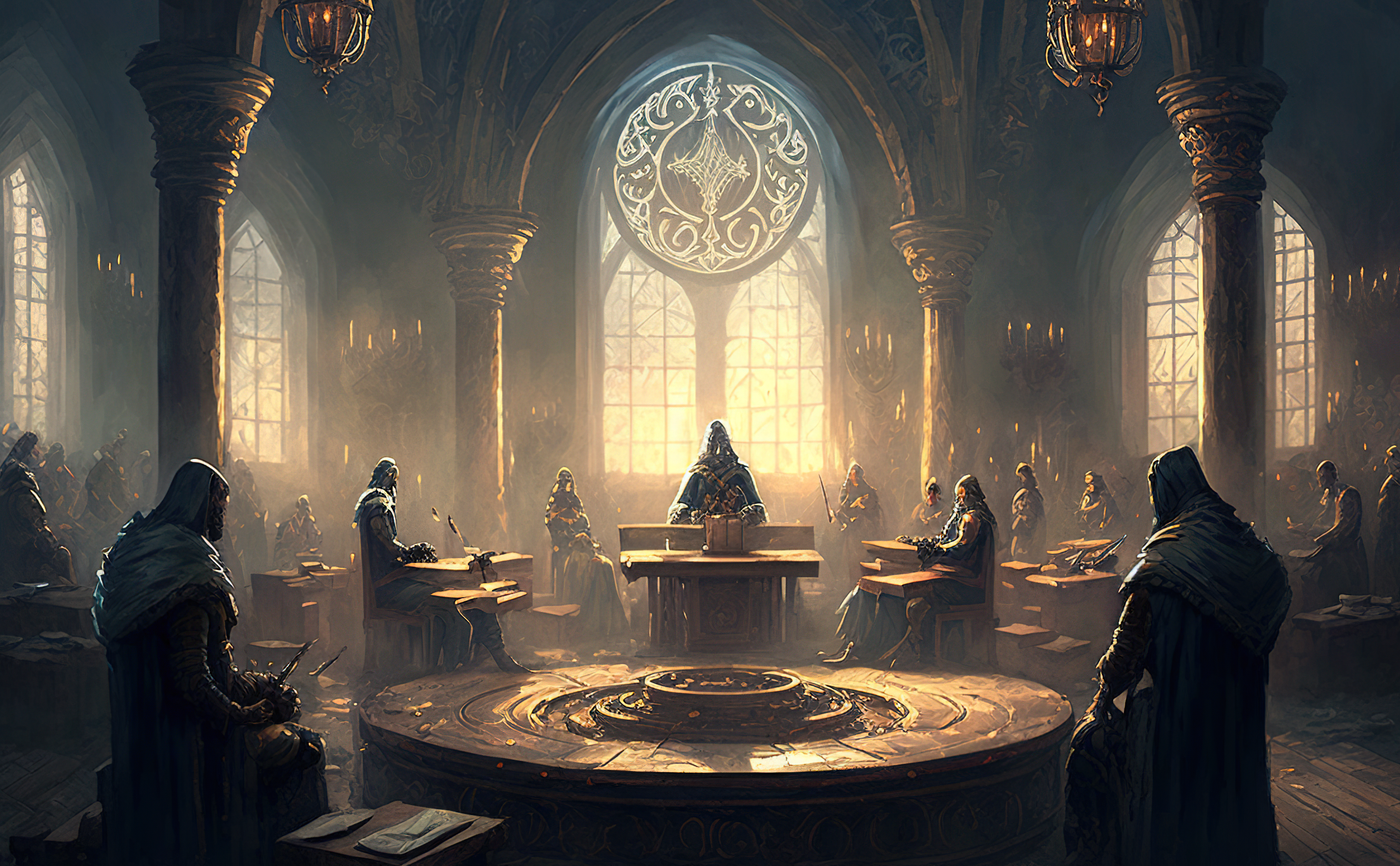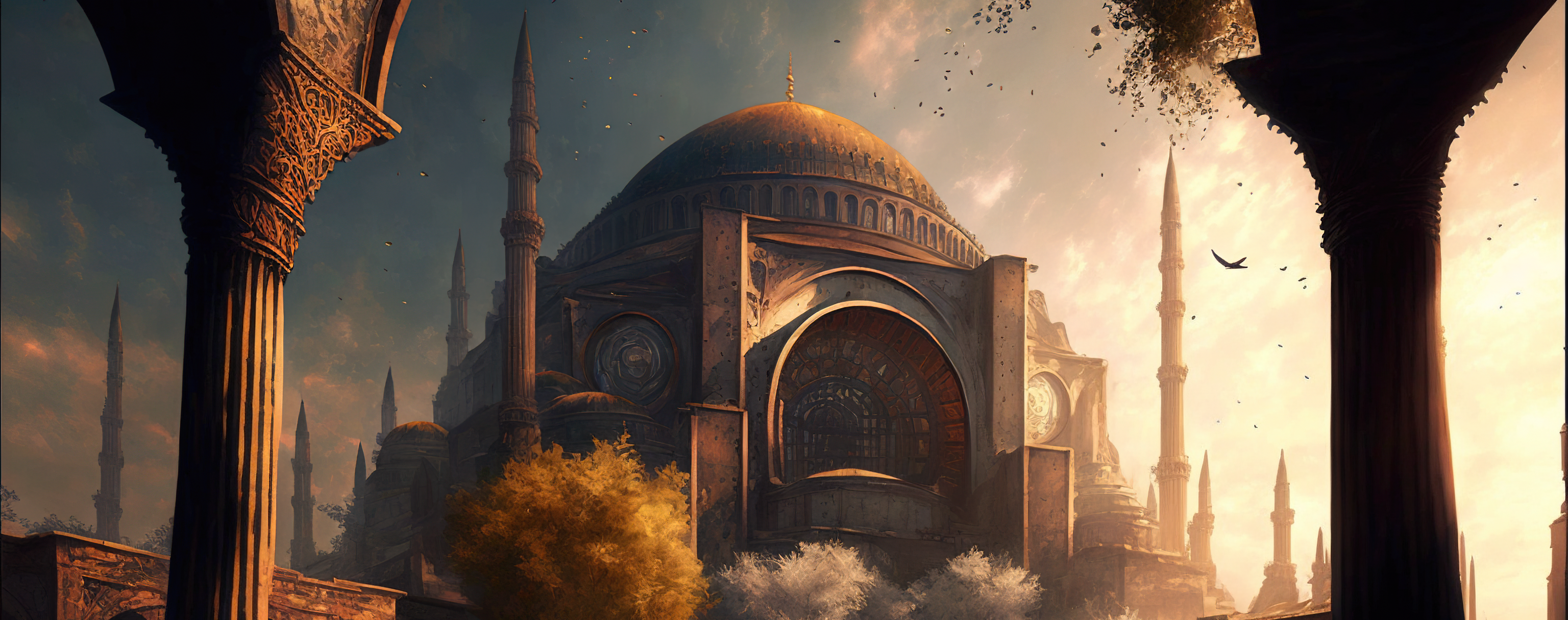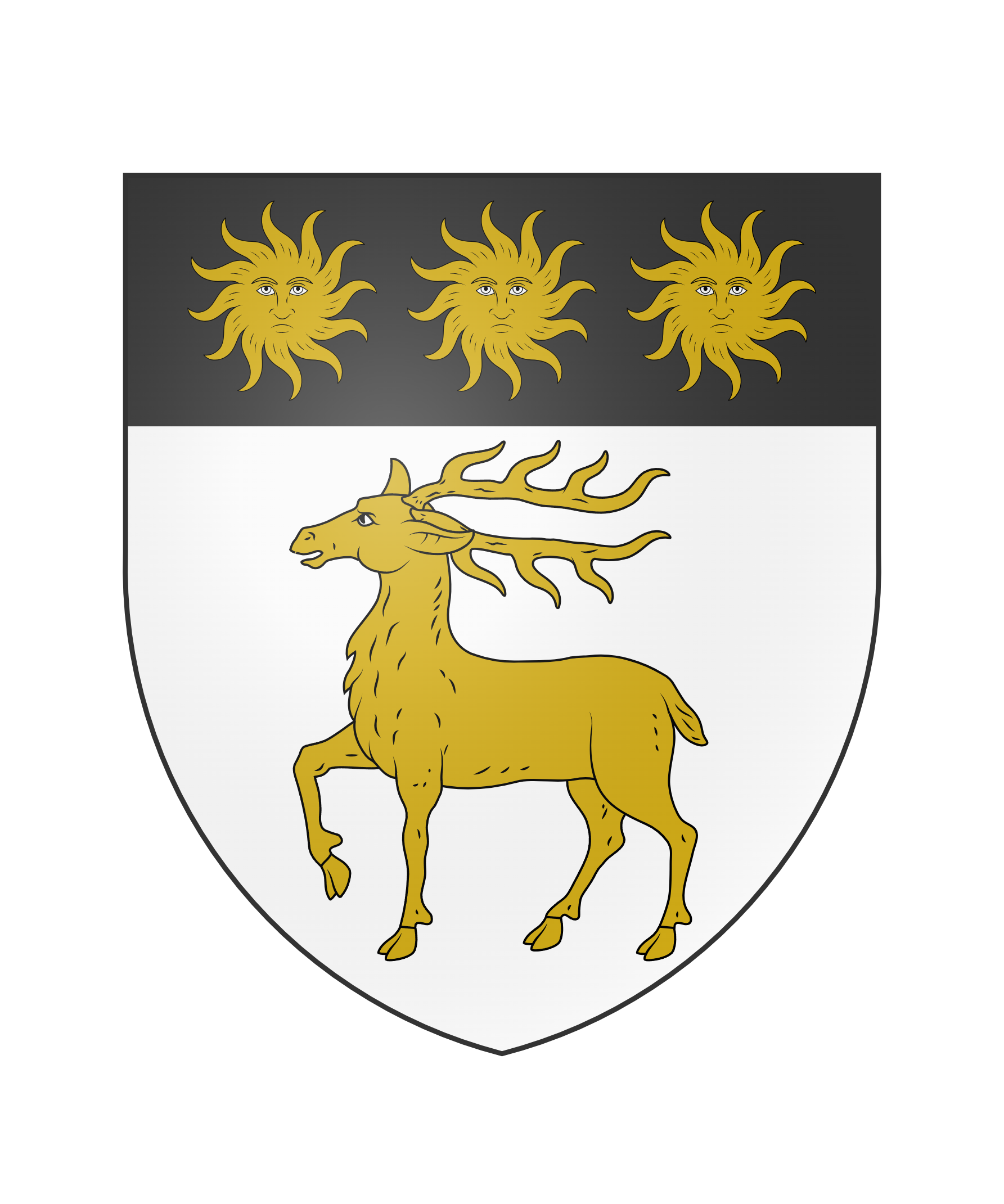The Eostre, the Chosen of the Light
"It is we who hold up the sun. It is we who have the power of Light. The forces of day, of good and justice are at our backs. It is we who keep the darkness at bay. Our history is born and dies with that great astre in the skies, and none, nobody shall deny our destiny. All will bask in the light of Laitos, for it is she who has birthed us, and to she will we be returned."- Archon Aurelëa Solumn
Overview
Of all the most influential peoples of Elementia, the Eostre have claim to be the greatest force for good. Their kind have scattered across the land, reaching the heights of the Great Roc, and the arid sands of the Ahtenese Empire. Their path in this world is marked by the creation of grand kingdoms, which peaks at the foundation of the Church of the Redeemer, and the building of Sigthel, the Citadel of the Light Eternal. The Eostre's history is a trove of crucial conflicts, influential monarchs, and grand alliances.
The Eostre people are located, primarly, in a land of great natural beauty and fertility. Their vale is lodged between a great chain of mountains, home to the Ilmari people, and large riverlands that feed into this area. As thus, they are a people prone to grand swathes of agriculture, arts and (through their worship of the sun) science. The Eostre have used the sun and stars to further their understanding of their farming and agriculture, using its movements to better predict the coming and going of the seasons. Their home country has gifted the Eostre great inspiration to their most creative minds, and the large forests that dot the Parhelion Vale have provided them with endless amounts of trees.
Culture
Culture and cultural heritage
Despite the idyllic nature of their country, the Eostre remain a battle hardened people, capable of fighting off many an invader, namely their natural enemies, the Màni horde. They count amongst their ranks the dreadful Church Rangers, who once rained down arrows of light onto their enemies, as well as the soldiers of the Brotherhood of the Dawn Eternal, fanatics of Laitos willing to cleave skulls for their Goddess. However, a grim truth remains. The Eostre people's society is stratified into castes. None may leave their castes, take on any roles or profession that would be considered outside said castes, and cannot marry, or even associate, with members of the above or lower castes. This emphasis on societal structures has created a harsh and authoritarian outlook on individual freedom.
Castes of the Eostre
There are five castes within the Eostre people, each deciding what kind of professions they can join, or whom they can speak to:- Redhor, lowest of the castes of the Eostre. The Redhor are makers of the land. They are farmers, swineherds, tillers and serve the upper castes by providing them with food and more often free labour. Redhor can pick up or work with tradesmen (Maenor) but never mount a business that is not based in their original profession. They are effectively serfs, and during times of war can be conscripted into the armies of their Lords or Ladies.
- Maenor, are the tradesmen and artisans of the Eostre. It is their duty to build, perfect and craft. The Maenor can be anything from stonemasons, to brewers, to architects. They can make a fortune off of their work, but may not touch or debase themselves to the level of the Redhor, nor are they allowed to wear armour and take up martial professions. The Maenor are notorious as create blade smiths, which is quite ironic. The Maenor and Arben can become solars of the Church, but not Orators.
- Arben, are the knights and landed gentry of the Eostre. Their duty is to wage the wars of their Lords and Ladies, and to mount armies in times of invasion. They are soldiers of profession, and often take up martial duties within the society, such as border guards, city guards, and so on. Many Arben own small plots of land around Sigthel, with numerous Redhor to serve them and support their lifestyle. The Maenor and Arben can become solars of the Church, but not Orators.
- Istyar, are the scribes and scholars of the Eostre. Many of the Orators of the Church is composed of this caste, with some Arben who have managed to break through the harsh societal barriers. The Istyar happen to be the caste from which many Lords and Ladies of the Eostre are issued from. Albeit their are instructed to never wield a blade, many do and famous swordsmen or men of arms are issued from this caste. In fact, the Archon's immediate guard is composed solely of the Istyar caste.
- Aerlinn, are the Lords and Ladies of the Eostre. There are only a few hundred across the world, and are revered as demigods by the faithful of Laitos. The Aerlinn are the masters of native and conquered lands. They rule as they wish within the Dogma of the Church, and hold great influence across the Vale, and beyond. The Archon of the Church is issued from this caste, as is their Consort. Often times, the Aerlinn are veiled when in public, preventing the lower castes from knowing their names, only their house and heraldry.
Art & Architecture
Architecture: The common form of Eostre architecture can be found in their cathedrals and churches, designed to let in as much light as possible, believing the sun's rays are blessings of Laitos and can save the souls of the faithful. Tall windows filled with ornate stained glass are found everywhere. Alabaster white walls and grand golden domes line the streets of Eostre settlements. Their greatest achievement yet has been Eostre's resting place, and seat of power of the Church of the Redeemer: Sigthel; it is a walled city of gilded domes and spiralling towers that reflect the light of the sun, found at the center of a great vale of golden barley, wheat and sunflowers.
Illumination: is the art of complex and detailed illustrations within religious manuscripts. It is an art born from scripture, and thus greatly tied into the Church's own dogma. Illumination, also known as inscription, can capture the magical essence of an element and consign it into ink. It is an artform that has a magical nature and for which the Eostre are quite famous. Their paintings are capable of moving, some even say capable of capturing the souls of their subjects. Many solars and orators of the Eostre carry with them numerous scrolls and talismans of warding on them.
Common Myths and Legends
The Eostre take their tribal name after their mythical leader, Eostre. Legend has it that in a time of bloodshed and conquest, a child of the Chosen of Light was born in the woodlands and abandonned by their mother, in hopes that they would die a painless death. This was a time of caves and stone, when the greatest metal known to man was bronze. Fate would have it otherwise, however. A great stag, sent by Laitos, would come to foster the child as their own son, and gift the boy with the powers of Light.
Decades later, when the Chosen of the Light were soon to be destroyed by the threats of the Màni's mounting forces. In an echo of the current turmoils that are plaguing the realm, the Horde of Shadows moved to eradicate Eostre's people, until he was called by their Goddess to their rescue. Emerging from the woodlands, the man wrought an army from the rays of the sun and forced back the darkness until they cowered to the far east of the world. Named as their chieftain, Eostre would begin to reform and change his people's society until his death, whereupon his soul rejoined the Sun above.
The Aldhart
The people of Eostre also worship the stag spirits of Light, creatures who have been bequeathed great power by places of power. The Aldhart is the epitome of Light Magic, capable of changing the very landscape around it. Albeit the Aldhart is mostly considered legend, many claim to have seem its form vanishing in and out of the woods around the Parhelion Vale. It is also customary to create a figure of the Aldhart in wicker every summer and burn it in hopes for a good harvest. Some peasents give offerings, however, in the most remote places of the vale. Some even more backwater folk have been said to sacrifice animals and children to the Aldhart, requesting power, vengeance, immortality or healing from illness too...
Names Hold Power
For the Eostre, names hold enormous power over a person. As such, it is rarely given except in confidence. The Eostre hold two names, one which is their public name, and the second which is their innermost, personal name. Only close members of a family would know their personal name, or 'soul name' as it is often dubbed.
Typical Male Names: Arbellason, Alyan, Arandur, Baradhamon, Beleg, Beriogelir, Cugedhion, Eithelonnen, Erubadhron, Lainadan, Urien, Suiadan...
Typical Female Names: Alassëa, Alya, Alassiel, Bellethiel, Beriadanwen, Cuiledhwen, Erulassë, Eruraviel, Fainauriel, Haeronwen, Tirananniel...
Character of the Eostre
The Eostre are said to be calm, patient and cunning folk. They weather their miseries rather than fight against them. The Eostre are welcoming of visitors, however do not address members of their own people of higher or lower castes.
Stereotypically, the Eostre are considered a temperate folk, regardless of their societal position, and are worried about the lack of values of other societies rather than their own. They have a tendency to point the finger rather than accept their own faults.
When portrayed in a more negative light, the Eostre are cunning to a fault. They will gladly find ways to undermine their adversaries rather than face them outright. It is more honorable to spare a man's life, but to bring their reputation into the ground.
For example, if an Eostre warrior were to disarm and incapacitate an enemy, who then surrenders, they would be more likely to accept the surrender and ensure they are killed by their own officers; or capture them and demand a ransom to their families and loved ones.
Cultural Symbols
Animal: The deer or the stag.
Coat of Arms: The parhelion sun, three suns merged into one: dawn, day and dusk.
Common Taboos
Cannibalism, tends to be an obvious taboo across all nations.
- Those found guilty of cannibalism are executed by drowning.
- Those who commit suicide are left to rot rather than be buried with their loved ones.
- Those found guilty of these relationships are stripped bare, lapidated and exiled from their country.
Related Organizations
Related Locations







Comments